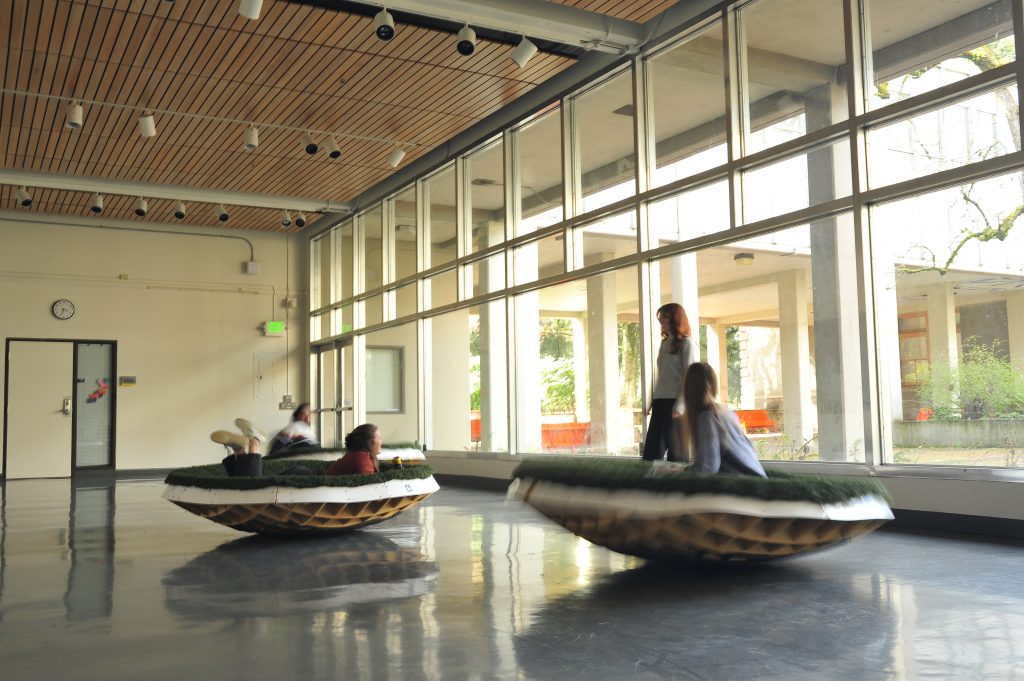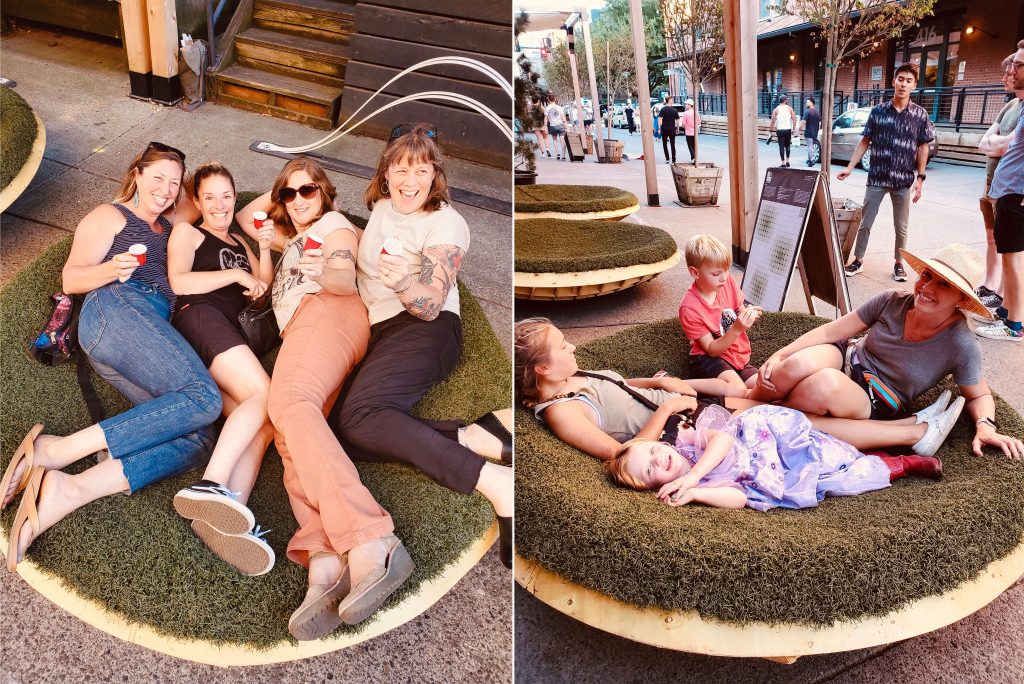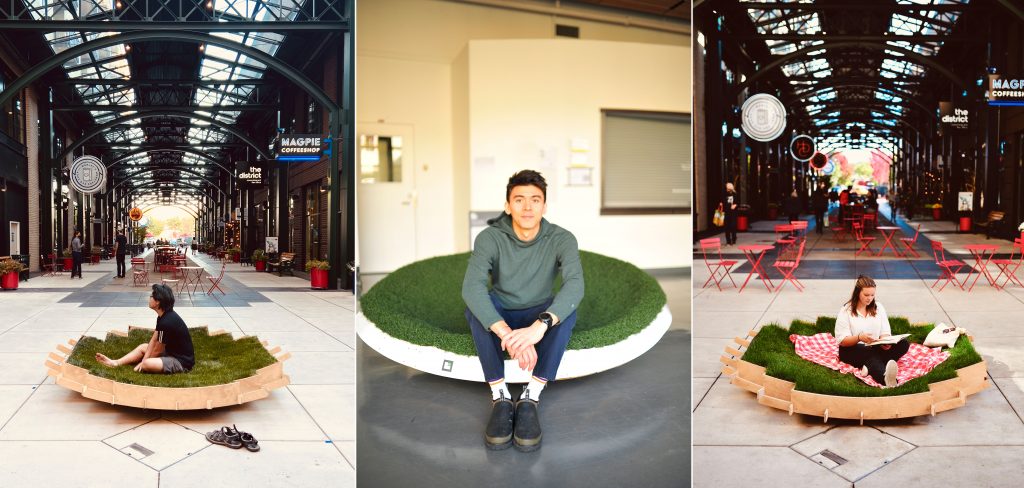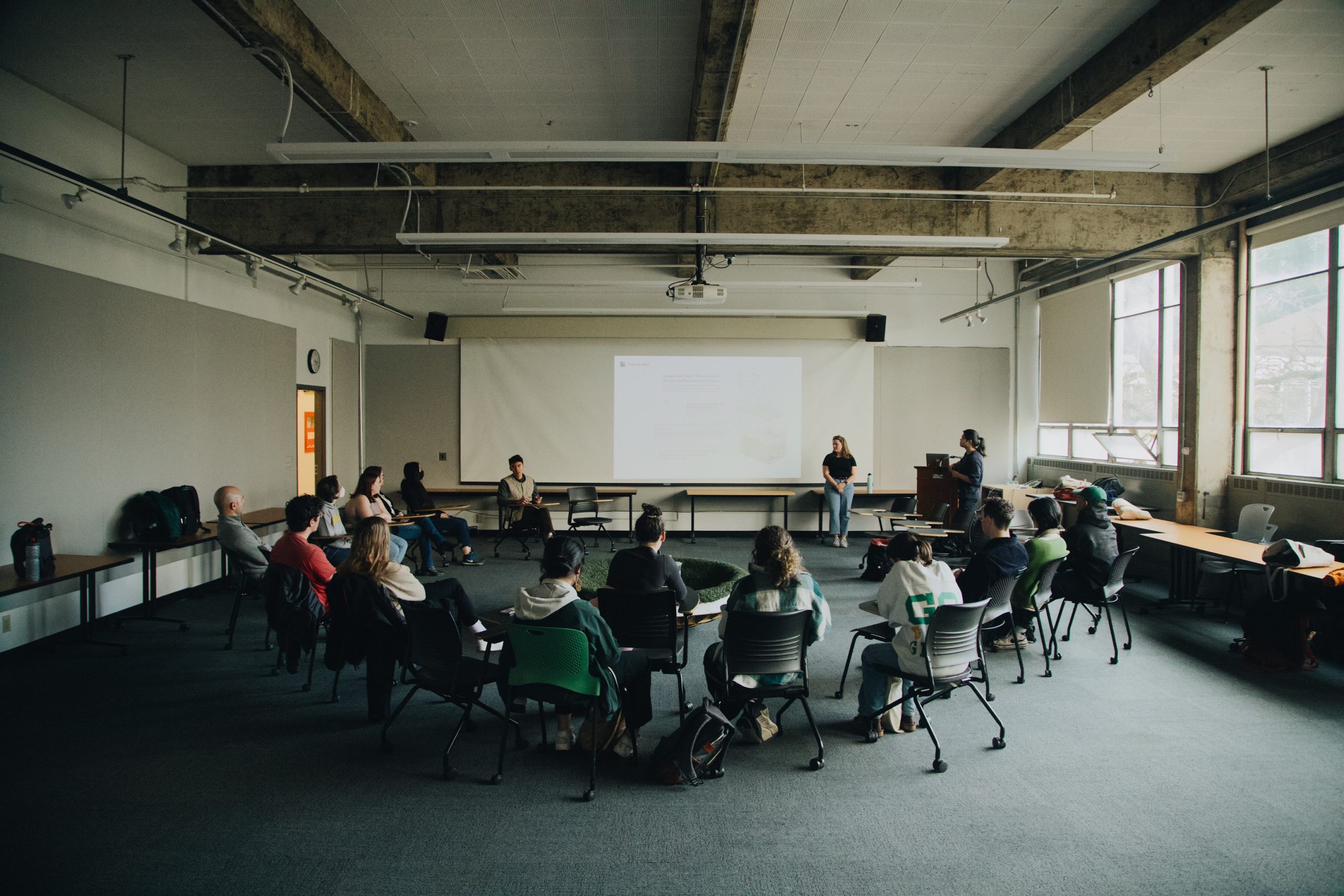Could you provide some basic information about how you and your team got started with this project?
Stay ON the Grass was birthed from a medical article I read early on during the COVID-19 pandemic that identified the decline in mental health for individuals in dense urban areas during the pandemic versus individuals in more rural areas.
On separate occasions phoning friends in larger cities than where I was living at the time (Eugene, OR), I learned about the shared frustration over the lack of green space, feelings of depression and isolation due to the inaccessibility to usable green space, and thus the lack of opportunities to just EXIST outside comfortably. In the face of a global pandemic, the urban design and architecture that is supposed to serve us proved to be futile, and even hostile towards those in dense urban areas, and it was costing many their mental well-being. Stay ON the Grass (SOTG) gave me and some friends the chance to respond to this need for more usable green space in dense urban areas, in hopes of opening up a discussion about our current state of urban design and planning which seems to prioritize building austere and uncomfortable paved hardscape instead of usable and calming landscape.
The concept and form of the installation is derived from the highly Instagrammed chalk bubbles outlined in grassy parks in bustling cities in the US such as San Francisco, San Antonio, and New York. The six-foot chalk bubbles separated by six foot aisles act as recreational social distancing bubbles. SOTG was intended to take the place of these bubbles in heavily paved urban areas where grass isn’t easily accessible. The dish of grass and wood rocks and sways when being used due to its concave form, while matching the ideal curvature of our human anatomy when laying in it (a living urban hammock, if you will).
Conceptually, the prospect of installing large grass bowls in urban areas was very exciting! Logistically, however, this was not nearly as fun of an undertaking. Being the founder of this installation project I didn’t expect anybody else in the team to financially contribute to supplies and materials; but for a fresh graduate with only an entry-level salary, buying numerous sheets of plywood (this was during the massive price hike on lumber), landscape materials (landscape fabric, dirt, sod), and paying for use of a CNC machine among other expenses, the financial burden was mounting with our excitement of the project. Fortunately, our team’s training with the AIAS and Freedom by Design (FBD) crowdsourcing and seeking sponsors for anything from installation projects to conference funding proved to be extremely useful. We were happy to find out that material sponsors in Oregon were equally as excited about the project as we were.
We built through the summer, released our first prototype, then did it all over again the following summer with our second prototypes (swearing after each time to never put ourselves through that again). Here we are three summers down the line and working towards the fabrication of our third and final prototypes, to be released Summer 2024 (if all goes well).
Have you received any feedback or engagement from communities when the installation is displayed, and if so, what has been the response?
Yes and no. While the SOTG pods were installed in their various locations, we always took several afternoons and evenings to chat with our users on-site about our message. While the intent was to start a discussion about the sheer racial and classist inequality in urban design and planning, and the designation of green spaces, we did not find many people wanting to talk with us about that— no.
However, the amount of feedback we received about the pods themselves was overwhelmingly positive! I can’t think of a single person that took issue with the installation’s message, and I actually believe that SOTG helped many people realize what they had been missing throughout the pandemic. The context in which we chose to locate the SOTG pods were generally very heavily paved spaces. The juxtaposition between the static and unfriendly hardscaped context with the über green, kinetic, and comfortable grass pods was a sight for sore eyes for many. What’s more is that we received several offers to buy them from us, and many requests to host the pods in other public places for which our users were responsible. So while nobody explicitly had the conversation with us that we were hoping to have, the fact that people actually WANTED our parklets really said it all.
We did also receive some constructive comments from a handful of users on different ideas of how the pods could be built differently which we appreciated.

Do you have any plans for future installations or projects related to urban design and sustainability, and how do you see your work evolving in the future?
Stay ON the Grass V1 evolved to V2, which is now evolving to V3 (and hopefully our last). What we gathered from the conversations we had around the SOTG pods was that pandemic or not, people want (NEED) more green space. Our first two prototypes were not meant to be permanent, so we spent a fair amount of time doing maintenance on them (we’ve done everything from reattaching broken members to literally doing landscape maintenance on these things–mowing the grass, watering, reseeding— you name it). It wasn’t until we put V2 out in the streets that we realized that there’s a real opportunity here. Everyone wants more green space but to go through the effort to get it is a hassle. While our initial hope was for our pods to inspire change in the urban planning and design of our cities going forward, it seems that maybe SOTG itself could be that change. We are designing V3 to be a part of the urban fabric and pedestrian experience, like a park bench or a nice patch of grass, but much better. Stay tuned!
Have you collaborated/worked on other projects related to urban design and sustainability, and if so, have those collaborations influenced your work (whether it be Stay ON the Grass or other work)?
I’m sure most architecture students have had plenty of group project experiences (good and bad) and I’m not an exception. Throughout university and now my career, I’ve been fortunate to collaborate with folks on a wide scale of projects from master plans to simple street objects. I wouldn’t say that these experiences have influenced the way that I design, but they definitely have influenced how the design teams are organized and run. I think our SOTG team is fortunate to have worked together on this because we work really well together. We understand each other’s strengths and respect each other’s opinions in those regards. Since all three of us really cut our teeth in AIAS and FBD, I think it’s safe to say that these groups have been a huge influence on how our team operates.

You were once a member of the FBD Advisory Committee. Would you mind sharing your opinion on the importance of having an FBD program at one’s school/the importance of FBD in general?
Wow, a blast from the past!
FBD and AIAS are, in my opinion, SUPER important to have at one’s school. The way I see it, you are attending architecture school because you want to DESIGN or MAKE something–let’s be real, nobody would put themselves through that just because they thought “it’d be fun.”
Outside of the limited studio options that are offered to you, when are you designing or making something that you actually want to design or make? You shouldn’t take the backseat in your education and FBD is a tool that lets you take control and lets you explore what you’re actually interested in. Moreover, FBD is likely the only group at your school that will give you hands-on experience in building something real. The kicker to all of this, which I didn’t realize until I was searching for material sponsors for SOTG, is that getting the funds through FBD to execute your project is a dream for any crowdsourced project. I believe FBD and AIAS are essential tools for creating a well-rounded architecture school experience.

Thank you again to Ryan (middle) and his team, Sang Pham (Left) and Erika Beehler (Right). For more information on Stay ON the Grass, visit the project’s Instagram page.
For more information on FBD (including how to declare your chapter’s project and apply for NCARB grant funding), visit the FBD page on our website. If you have additional questions about FBD and/or if you have an FBD project you would like showcased, reach out to Jody Allen at jodyallen@aias.org.










